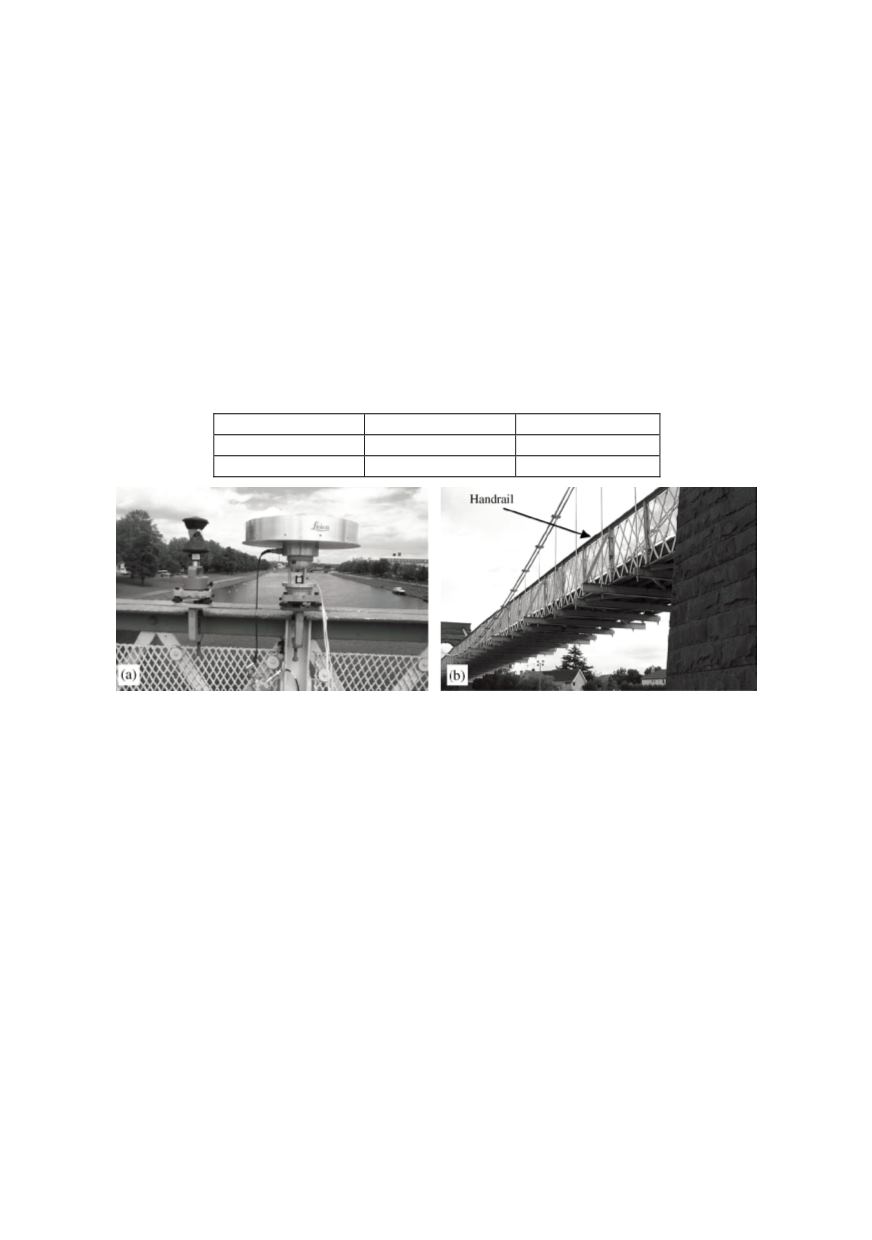

248
The GPS sensors were employed for the acquisition of ambient excited signals, being
strongly polluted by GPS noise. A pass band filter was applied to the signals acquired in
the attempt to clear out those frequencies mainly due to electromagnetic interferences.
The GPS receivers and antennas,
Fig. 8,
employed to monitor the displacements of the
Wilford Bridge were provided by Leica Geosystems Ltd., and were capable to acquire the
real time absolute three-dimensional positions at 2 mm positioning accuracy and a rate of
10 Hz. This meant that according to theory, the extractable modal properties should have
a frequency smaller than 5 Hz. The bridge ambient vibrations have been detected using a
network of GPS sensors installed on the bridge. The FFT analysis shown that not all the
random noise was taken out by the RDT process. Both the techniques employed, ERA
and WME, extracted only one vibration mode, the frequency and the modal damping are
listed in Table 2. The results showed that the two techniques used provided very similar
results in the estimation of the first natural frequency with a difference of 1%.
Table 2: Modal properties of the Nottingham Wilford bridge /10/
Extraction technique Frequency (Hz)
Modal damping
ERA
1.74
0.025
WME
1.72
0.019
Figure 8: GPS positioning at the Wilford Bridge /10/
The real-time kinematic global positioning system (GPS), installed on the bridge for
on-line monitoring of bridge deck movements, has shown the potential of using GPS
sensor to monitor and measure the vibration properties of medium span suspension bridge
in the low-frequency range; the data can be used for extracting modal properties from in-
service-loads induced low-frequency vibration (< 5 Hz) by processing the signal with the
wavelets transform. This was applied to the Tsing Ma long suspension bridge in Hong
Kong and described in detail in Ref. /11/.
The instrumentation for bridge monitoring in many cases consists of a mix of dual and
single frequency GPS receivers, triaxial accelerometers, pseudolite transmitters and
GPS/pseudolite compatible receivers and a digital weather station.
The features of single and dual frequency GPS receivers are pointed out, including
instrument price and the time required for resolving integer ambiguities. A single freque-
ncy GPS receiver is about half the price of a dual frequency receiver. Whilst a dual fre-
quency GPS receiver fixes digital ambiguity in nearly real-time, a single frequency recei-
ver has to take about half of an hour to achieve a fixed solution. Anyhow, research re-
veals that for bridges that only have limited movements of a few cm the achievable positi-
oning accuracy with a single frequency receiver can be at least as good as that of a more


















